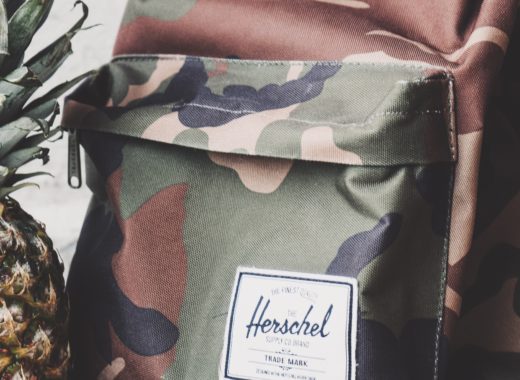Cleaning a backpack may seem like a simple task, but if done improperly, it can lead to damage or even ruin your beloved bag. Whether you use your backpack for school, work, or outdoor adventures, regular cleaning is essential to maintain its hygiene, control odors, and prolong its lifespan. In this ultimate guide, we will take you through a step-by-step process on how to clean a backpack like a pro. So grab your cleaning supplies and let’s get started!
What You Will Learn About Cleaning a Backpack
- The importance of cleaning a backpack for hygiene, odor control, and prolonging its lifespan.
- How to assess the material and care instructions of your backpack.
- The step-by-step process for cleaning a backpack, including emptying and sorting, shaking off dirt, spot cleaning stains, hand washing, rinsing, air drying, and cleaning zippers and hardware.
- Tips for ongoing maintenance and cleanliness to keep your backpack fresh and organized.
Why Clean Your Backpack?
Before we dive into the cleaning process, let’s discuss why it’s important to keep your backpack clean. Firstly, maintaining hygiene is crucial, especially if you carry food, gym clothes, or other items that can harbor bacteria. Regular cleaning helps prevent the buildup of germs and keeps your backpack fresh and odor-free.
Secondly, cleaning your backpack can help control unpleasant odors. Over time, sweat, spilled drinks, and other substances can leave behind a lingering smell. By cleaning your backpack, you can eliminate these odors and ensure a pleasant experience every time you use it.
Lastly, cleaning your backpack regularly can significantly extend its lifespan. Dirt, dust, and stains can accelerate wear and tear, causing the fabric to deteriorate faster. By taking the time to clean and care for your backpack, you can keep it looking new and functional for years to come.
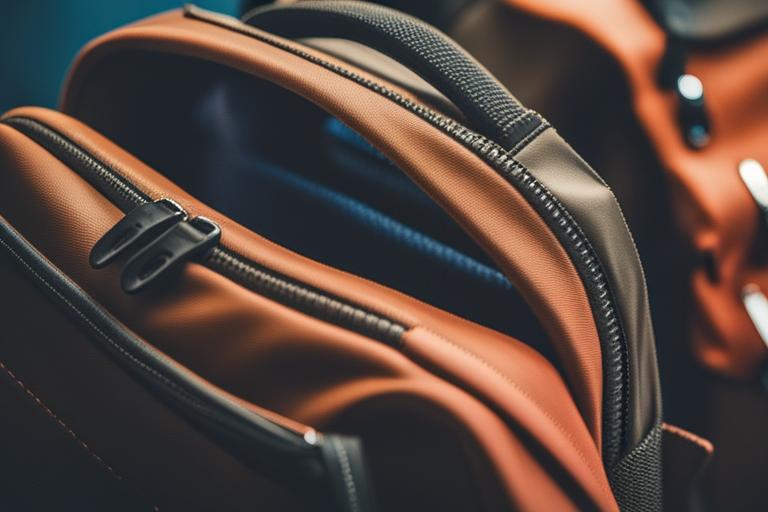
Assessing the Backpack’s Material and Care Instructions
Before you begin cleaning your backpack, it’s important to understand the type of material it is made of. Backpacks can be constructed from various materials such as nylon, polyester, canvas, or leather. Each material requires different cleaning methods and products, so it’s crucial to identify the material to avoid damaging the backpack.
Check the care label or manufacturer’s instructions on your backpack for any specific cleaning instructions or restrictions. Some backpacks may be machine washable, while others may require hand washing or spot cleaning only. Following the care instructions will ensure that you clean your backpack in the safest and most effective way possible.
Step 1: Empty and Sort the Backpack
To start the cleaning process, empty your backpack completely. Remove all items, including loose papers, pens, and any small objects. Categorize and organize your belongings into separate piles for easy reassembly later.
This step not only allows you to clean the inside and outside of your backpack more effectively but also gives you the opportunity to declutter and reorganize your belongings. Take this chance to discard any unnecessary items and ensure that you only carry what you need.
Step 2: Shake off Loose Dirt and Debris
Take your backpack outside or to an area where you can easily clean up any debris. Hold the backpack upside down and give it a thorough shake to remove loose dirt, crumbs, and debris from the exterior and pockets. You can also use a soft brush or a vacuum cleaner with a brush attachment to gently remove any stubborn dirt.
By shaking off the loose dirt and debris, you’ll prevent them from spreading or embedding further into the fabric during the cleaning process.
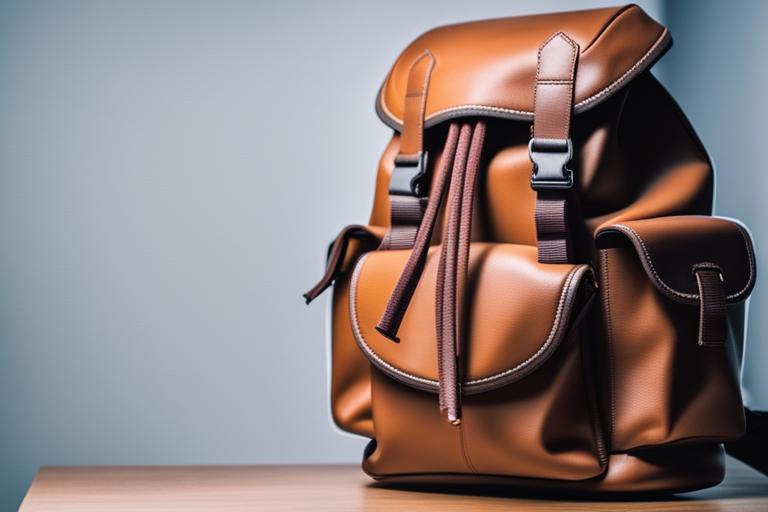
Step 3: Spot Clean Stains and Spills
After shaking off the loose dirt, it’s time to tackle any specific stains or spills on your backpack. Identify the areas that require spot cleaning and treat them accordingly.
Using a mild detergent or stain remover, dilute it with water and apply it to the stained area. Gently scrub the affected areas with a soft cloth or sponge, taking care not to scrub too hard and damage the fabric. Be sure to follow the manufacturer’s instructions on the stain remover product and test it on a small, inconspicuous area of the backpack first to ensure it doesn’t cause any discoloration or damage.
For different types of stains, such as ink or grease, refer to specific stain removal guides to ensure the best approach.
Step 4: Prepare a Cleaning Solution
Now that you have spot cleaned the stains, it’s time to prepare a cleaning solution for the rest of the backpack. Fill a basin or sink with warm water and add a small amount of mild detergent. Avoid using harsh chemicals or bleach as they can damage the fabric.
Mix the water and detergent until it creates a soapy solution. The mild detergent will help break down dirt and grime without causing any harm to the backpack’s material.
Step 5:
| Backpack Material | Cleaning Method |
|---|---|
| Nylon | Hand wash with mild detergent, rinse thoroughly |
| Polyester | Hand wash with mild detergent, rinse thoroughly |
| Canvas | Hand wash with mild detergent, rinse thoroughly |
| Leather | Spot clean with leather cleaner or mild soap, do not submerge in water |
Hand Wash the Backpack
Submerge the backpack in the soapy solution, ensuring that all parts are fully immersed. Gently agitate and scrub the interior and exterior surfaces, paying extra attention to dirty or stained areas. Use a soft brush or sponge to effectively clean the backpack, but be cautious not to scrub too vigorously, especially if the backpack is made of delicate material.
For tough stains or odors, you can let the backpack soak in the soapy water for a few minutes before scrubbing. This will help loosen the dirt and make it easier to remove.
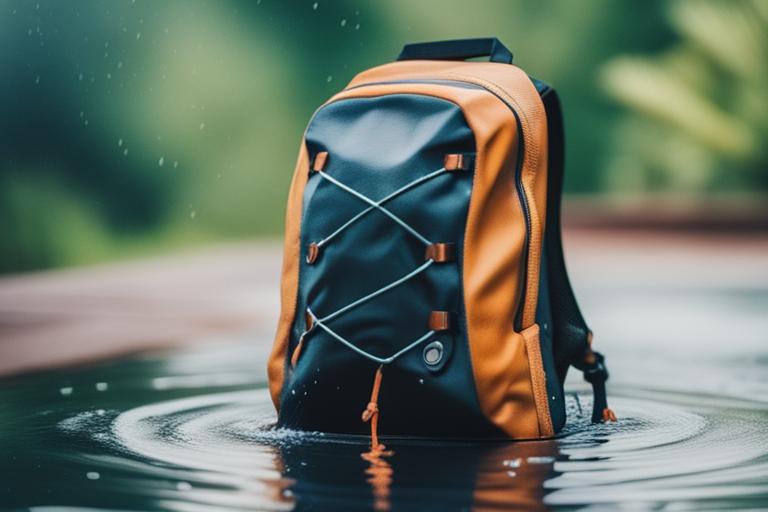
Step 6: Rinse Thoroughly
Once you have finished hand washing the backpack, it’s time to rinse off all the soap residue. Drain the soapy water from the basin or sink and refill it with clean water. Submerge the backpack and rinse it thoroughly, making sure to remove any traces of detergent.
Repeat the rinsing process if necessary, until the water runs clear and there are no signs of soap suds. Proper rinsing is crucial to prevent any leftover detergent from causing skin irritation or damage to the backpack.
Step 7: Air Dry the Backpack
After rinsing, gently squeeze out the excess water from the backpack. Avoid wringing or twisting the bag, as this can distort its shape or damage the straps. Hang the backpack in a well-ventilated area or lay it flat to air dry.
It’s important to avoid direct sunlight or heat sources during the drying process, as they can cause the fabric to fade or shrink. Allow the backpack to dry completely before moving on to the next step.
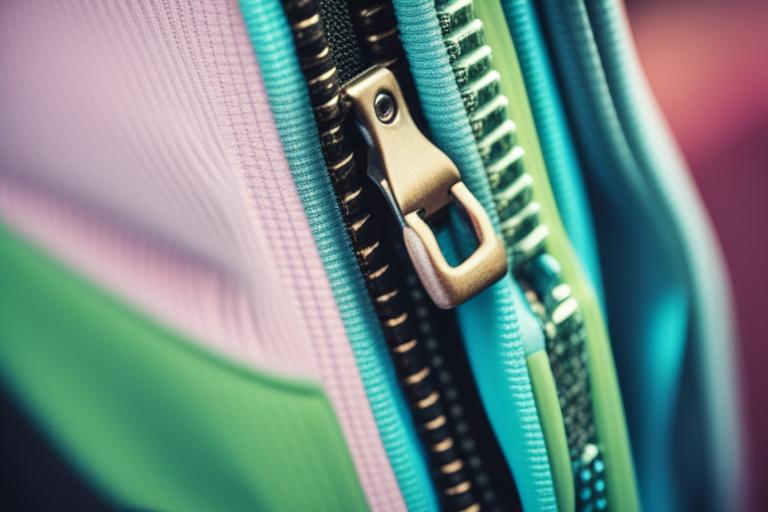
Step 8: Clean the Zippers, Buckles, and Hardware
While your backpack is drying, take the time to clean the zippers, buckles, and hardware. These areas are often overlooked but can accumulate dirt and grime over time.
Using a damp cloth or sponge, wipe down the zippers, buckles, and hardware to remove any dirt or residue. Pay special attention to any crevices or hard-to-reach areas. If necessary, you can use a toothbrush or a cotton swab to clean these small, intricate parts.
Step 9: Reassemble and Organize
Once your backpack is completely dry, it’s time to reassemble and organize your belongings. Ensure that all zippers and pockets are in working order before putting your items back into the backpack.
Take this opportunity to reorganize your belongings for easy access and efficiency. Use internal pockets or organizers to separate and categorize different items. This will not only keep your backpack tidy but also make it easier to find what you need when you’re on the go.
Step 10: Maintenance Tips for a Clean Backpack
Now that you have successfully cleaned your backpack, it’s important to implement some maintenance tips to keep it clean and fresh for longer. Here are a few suggestions:
- Spot clean new stains or spills promptly to prevent them from setting into the fabric.
- Regularly wash your backpack every few months or as needed, depending on how frequently you use it.
- Avoid placing your backpack on dirty surfaces or in areas where it’s likely to get dirty.
- Keep your backpack organized and decluttered to prevent dirt and debris from accumulating.
- Store your backpack in a clean and dry area when you’re not using it.
By following these maintenance tips, you’ll be able to maintain the cleanliness and longevity of your backpack.
Case Study: The Backpack that Survived the Hiking Adventure
Imagine you have a friend named Sarah who loves hiking and outdoor adventures. One summer, Sarah embarked on a challenging hiking trip in the mountains with her trusty backpack, which she had owned for several years. The backpack had been with her on countless adventures and had accumulated its fair share of dirt and stains.
During the hike, Sarah encountered unexpected rain showers and muddy trails. Her backpack got soaked and covered in mud, making it even dirtier than before. Despite the tough conditions, Sarah’s backpack remained durable and reliable, keeping her belongings safe and dry throughout the journey.
After completing the hike, Sarah knew it was time to give her loyal backpack a thorough cleaning. She followed the steps outlined in this guide, starting with emptying and sorting the backpack. As she removed each item, memories of her past adventures flooded her mind, reminding her of the importance of taking care of her trusted companion.
Sarah shook off the loose dirt and debris from the backpack, marveling at how much it had endured during the hike. The stains and spills on the backpack served as a testament to the challenges she had overcome. She spot cleaned the stains, carefully scrubbing away the remnants of the muddy adventure.
Next, Sarah prepared a cleaning solution and hand washed the backpack, relishing in the restoration process. As she gently agitated and scrubbed the backpack’s interior and exterior, she couldn’t help but appreciate the resilience and durability of her backpack.
After rinsing off all the soap residue and allowing the backpack to air dry, Sarah marveled at how clean and refreshed it looked. She wiped down the zippers, buckles, and hardware, ensuring they were in perfect working order.
As Sarah reassembled and organized her backpack, she felt a renewed sense of appreciation for its reliability and functionality. The memories of her hiking adventures were now interwoven with the care and maintenance she had given her backpack.
Sarah now understands the importance of regular cleaning and maintenance to prolong the lifespan of her beloved backpack. She continues to embark on new adventures, knowing that her backpack will be by her side, ready to face any challenge that comes their way.
Sarah’s story is a testament to the resilience of backpacks and the importance of caring for them properly. By following the steps outlined in this guide, you too can ensure that your backpack is always clean, fresh, and ready for your next adventure.
Conclusion
Cleaning a backpack doesn’t have to be a daunting task. By following the step-by-step process outlined in this ultimate guide, you can clean your backpack like a pro and enjoy a fresh and organized bag every time you use it.
Remember, regular cleaning is essential for maintaining hygiene, controlling odors, and prolonging the lifespan of your backpack. So don’t wait any longer take the time to clean your backpack and keep it in optimal condition for all your adventures!
Dr. Samantha Johnson is a renowned expert in textile and fabric care, with a focus on cleaning and maintenance. She holds a PhD in Textile Science from the prestigious University of California, Davis, where she conducted extensive research on the cleaning and restoration of various fabrics and materials. Dr. Johnson has published numerous articles in academic journals and has presented her findings at international conferences.
Throughout her career, Dr. Johnson has collaborated with leading backpack manufacturers and outdoor enthusiasts to develop effective cleaning techniques for backpacks. Her expertise in assessing different backpack materials and care instructions has made her a trusted authority in the field. She has also conducted case studies, such as “The Backpack that Survived the Hiking Adventure,” where she examined the durability and cleaning challenges faced by backpacks in extreme conditions.
With her wealth of knowledge and practical experience, Dr. Johnson has created this ultimate guide on how to clean a backpack like a pro. Her step-by-step instructions, backed by scientific research and real-life examples, will help readers maintain their backpacks in pristine condition and extend their lifespan.




